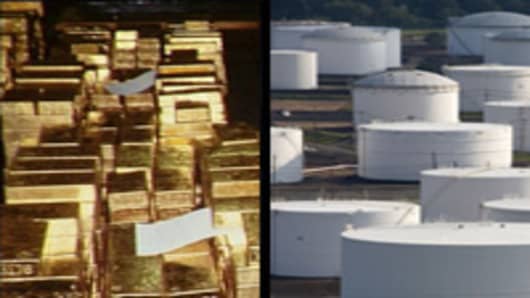Valuing commoditiesis a bit like shopping for a wardrobe. For the latest haute couture styles you’re going to pay a premium while abundant inventories of basics will be much cheaper.
Long-term trends including a growing middle class and increased industrial development in emerging markets should make most commodities long-term winners, but determining the hot performers over the next 12 months is trickier.
Like buyers who price high fashion, some commodity managers break the decision down to supply levels.
“Tight inventory levels and supply shocks often drive commodity prices higher,” says Sassan Alizadeh of Highbridge Capital Management. “Many of the commodities that have rallied a lot over the past few years have been in tight supply.”
Using this metric, 2012 should be a good year for cornand refined oil products. Corn is already in tight supply worldwide, and expectations of poor weather in the growing regions of South America over the next several months could cause inventories to shrink further.
With prices back over $100 per barrel, crude oillooks like another strong performer, although the oil situation is complicated.
U.S. demand for oil has been sluggish since the financial crisis while domestic supply is more than ample as measured by the price of West Texas Intermediate or WTI crude.
Supplies of unleaded gasolineand heating oil, however, are much lower, providing an opportunity. If you’ve filled up recently, it’s easy to see the attraction of betting on a rise in gas prices through gasoline futures contracts.
Oil produced outside the U.S., as measured by Brent crude, is more expensive and more susceptible to price spikes from potential supply disruptions in the Persian Gulf.
“An escalation in Iran would be supportive for energy prices, especially for the energy commodities with lower levels of inventory such as Brent crude,” adds Highbridge’s Mark Nodelman. “This is how prices responded to the crisis in Libya in early 2011.”
Taking both supply and demand into account leads Van Eck Global’s Charl Malan to the semi-precious metals platinum and palladium. Malan, a senior metals and mining analyst for the commodity asset manager, says both metals should benefit from surging auto demand in China. (Platinum and palladium are used in catalytic converters for gas and diesel engines, respectively.)
Both metals are mined primarily in South Africa, where poor profitability, productivity and unrest among union workers are hampering supply. Due to the profitability issue, Malan favors investing directly in the commodities rather than mining stocks.
You can do this through ETFs that hold bars of the metals like ETFS Physical Platinum Shares and ETFS Physical Palladium Shares or exchange traded notes, ETNs, that invest in platinum futures contracts like iPath Dow Jones-UBS Platinum Total Return Sub-Index ETN.
Copperis also thriving due to supply/demand imbalances. A wide variety of uses makes this industrial metal a bellwether of global growth.
Market watchers expect copper demand to increase at a 4 percent annual rate while the world’s largest producer, Freeport McMoRan, struggles to keep its production growth at 3 percent.
Copper supply faces secular headwinds, which should keep prices strong, says Annapolis, Md.-based commodity asset manager Adrian Day. Production has fallen the last two years despite record prices.
Most of the world’s easily accessible copper deposits have been exploited, making discovery and extraction of new copper expensive and time consuming. The latest major copper discovery was made in Mongolia in 1997but production there won’t commence for two more years.
Copper miners enjoy high profit margins, making mining stocks the best way to gain exposure to the commodity, says Malan.
Whilecorn, energyand some industrial metals look particularly well positioned for gains in the year ahead, the secular outlook for hard assets also remains strongly bullish.
“Commodities need economic growth,’’ says Day. “Low interest rates have been positive and a declining dollar also helps. Both trends are still intact.”


